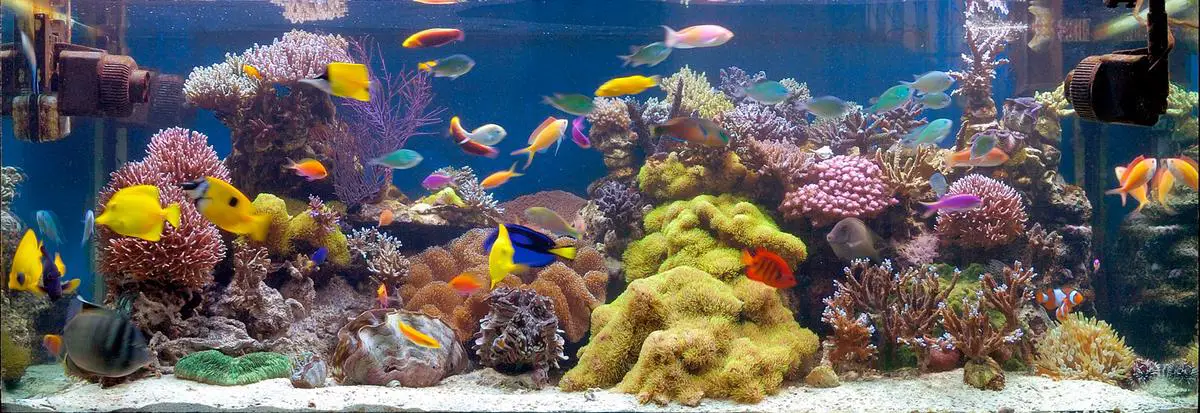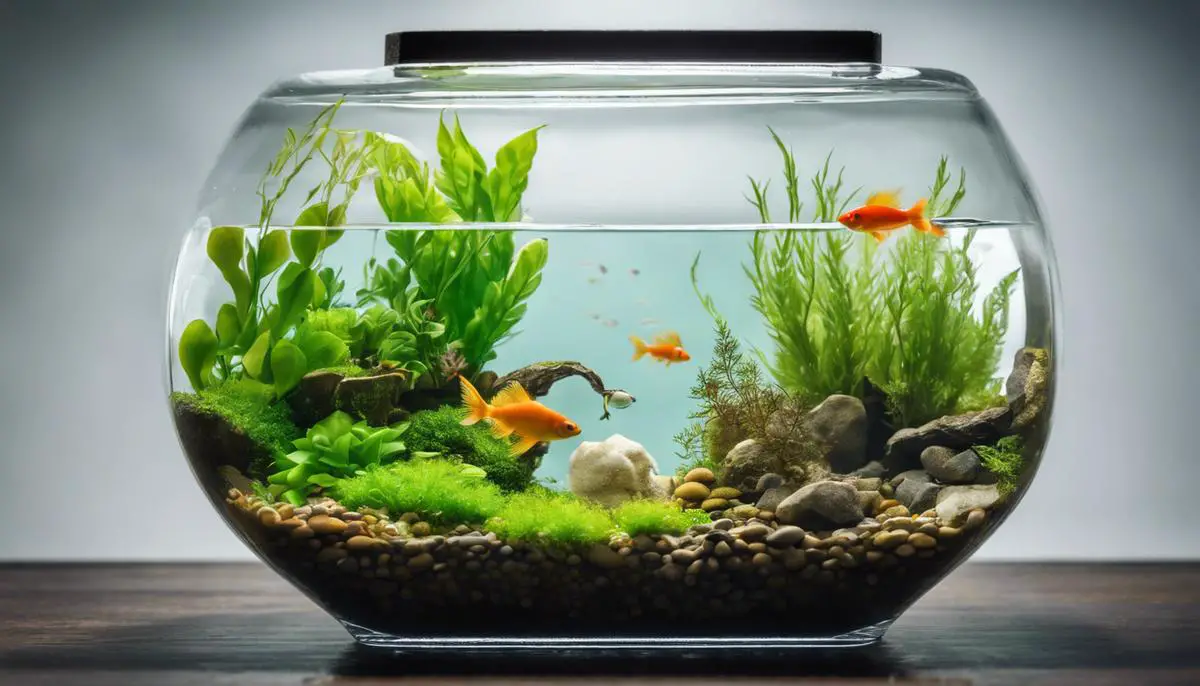What is an underwater terrarium?
An underwater terrarium, also known as an aquatic terrarium or paludarium, is a specialized environment created within a sealed or partially sealed container that mimics natural aquatic ecosystems. This unique space houses water-dwelling plants, microfauna, and sometimes small aquatic animals, blending aquascaping with terrariology to offer a dynamic view of nature's underwater scenes.
The choice of container for an underwater terrarium is crucial for success. Typically, it requires a transparent, water-tight vessel such as an aquarium or a specially designed terrarium with clear glass or acrylic walls for easy observation. The size and shape of the container impact the types of species it can support and how effectively the water conditions can be maintained.
Common choices for aquatic flora include:
- Java Moss
- Anubias
- Amazon Sword plants
These plants are hearty under a variety of light conditions and provide an ideal environment that supports the Native methods and slime cycling. They play a critical role in the ecosystem by oxygenating the water and offering habitat for microfauna.
Microfauna in underwater terrariums include varieties of snails, shrimps, and small fish species that contribute to the ecological balance. They engage in decomposing organic material, aiding in nutrient cycling and helping to keep the ecosystem clean and stable.
The water used should be dechlorinated and maintained at appropriate chemical balances to simulate the natural habitat of the plants and animals housed within. Regular monitoring and adjustments ensure that pH levels, temperature, and nutrient concentrations are optimal for sustaining life.
Underwater terrariums serve educational purposes by providing a closer look at aquatic life cycles and ecological interactions. In settings such as classrooms, they offer a practical demonstration of ecological and biological principles. They encourage conservation and ecological awareness by mimicking endangered or delicate ecosystems, highlighting the need for environmental protection.
How to set up an underwater terrarium?
Step 1: Selecting the Container
Begin by choosing a clear, sealable container that is both water-tight and sizable enough to accommodate the landscaping and species you intend to house. Aquariums or specially designed terrarium tanks made of glass or acrylic are suitable because they allow for full visibility and effective maintenance.
Step 2: Preparing the Substrate
The foundation of an underwater terrarium consists of substrates such as gravel or sand, which offer both aesthetics and practical functions. Layer about two inches of washed gravel or coarse sand at the bottom. This layer aids in drainage and provides an anchor for plant roots.
Step 3: Adding Water
Slowly fill the container with dechlorinated water to prevent disturbing the substrate layer. Ensure the water is free from chlorine and other chemicals harmful to aquatic life. The introduction of water should be gradual, particularly in systems where microorganisms or delicate root systems are involved.
Step 4: Installing Plants and Microorganisms
Choose suitable aquatic plants like Java Moss or Dwarf Hairgrass and place them strategically within the terrarium, rooting them firmly within the substrate. Introduce beneficial microorganisms or small aquatic species such as snails or shrimps that help maintain ecological balance through bio-cleaning processes.
Step 5: Lighting and Temperature Control
Ensure sufficient lighting is available to support photosynthesis and maintain the vitality of the plants. LED aquarium lights are a good choice as they provide adequate spectrum light without emitting excessive heat. Temperature control must also be considered; use heaters for tropical species or a cooler location for temperate setups.
Step 6: Initial Placement and Maintenance
Place your terrarium in a location where it receives moderate natural light but avoid direct sunlight, which can lead to overheating or algae growth. Regular maintenance including monitoring water quality, pruning overgrown plants, and managing nutrient levels in the water are essential to ensure long-term stability and health of the ecosystem.

Benefits of creating an underwater terrarium?
Ecological Insights
Underwater terrariums are dynamic models of aquatic ecosystems, demonstrating vital ecological cycles such as the nitrogen cycle, carbon cycle, and food web interactions. This closed environment helps participants observe how aquatic plants and microfauna establish symbiotic relationships, contributing to the biological filtration and stability of the habitat. They mimic real-world ecosystems on smaller scales, providing tangible insight into the complexities of ecological balance and biodiversity.
Educational Value
In educational contexts, underwater terrariums serve as excellent, hands-on tools for teaching biological and environmental sciences. They allow students and observers to watch ecological and physiological processes in real-time, enhancing their understanding of topics such as photosynthesis, respiration, and environmental conservation. By managing their own terrariums, learners actively engage with concepts of responsibility and conservation, seeing firsthand the impact of their care or neglect on a living ecosystem.
Aesthetic Harmony
Functioning as living art, these terrariums add a serene, captivating element to any interior space. The tranquil beauty of an aquatic scene can elevate the ambiance of homes, offices, and classrooms. Their aesthetic appeal stimulates interest in ecology and prompts natural curiosity, making them not just decor but conversation starters that raise awareness about ecological sustainability.
Conservation and Sustainability Implications
Maintaining an underwater terrarium highlights the fragility of aquatic environments, emphasizing the need for environmental stewardship. As observers see how systems can thrive or decline based on their interactions with the environment within a tank, they gain a microscopic view of the larger challenges facing natural aquatic systems. This perspective inspires a deeper commitment to sustainable practices, including water conservation and protection of aquatic habitats.
Writio: The ultimate AI content writer that creates quality articles. This was written by Writio.
- Deusi S, Pant R. A beginner's guide to creating underwater terrariums. Aquascaping World. 2019;12(3):45-52.
- Hoffman L, Chen P. The role of aquatic plants in underwater terrariums: a review. J Aquat Plant Manage. 2020;58:23-29.
- Nguyen T, Kim J, Park S. Educational benefits of underwater terrariums in biology classrooms. J Biol Educ. 2021;55(2):178-189.
